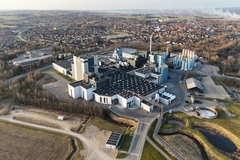
- Industry news
Industry news
- Category news
Category news
- Reports
- Key trends
- Multimedia
Multimedia
- Journal
- Events
- Suppliers
- Home
- Industry news
Industry news
- Category news
Category news
- Reports
- Key trends
- Multimedia
Multimedia
- Events
- Suppliers
Speedy Sensor Device Detects E Coli in Food and Water

Conventional methods to screen food to find sickness-causing microbes can take up to 24 hours, which is often too slow to efficiently catch tainted products before they hit store shelves. Faster methods do exist, but have limitations.
Extremely low levels of bacteria can be detected by magnetic resonance but this is not so effective at higher bacteria concentrations. Fluorescence is the opposite. Tuhina Banerjee, Santimukul Santra and colleagues wanted to see if they could combine the two techniques to make a better detector.

The researchers have developed a hybrid nanosensor incorporating magnetic resonance and fluorescence. They tested milk in the lab which showed the detector could sense varying concentrations of a pathogenic strain of E. coli known as O157:H7 in less than an hour.
The sensor was also used to analyze E. coli levels in untreated lake water and the device could be customized to detect a wide range of pathogens beyond E. coli, the researchers say.
The study appears in the Journal ACS Infectious Diseases (Multiparametric Magneto-fluorescent Nanosensors for the Ultrasensitive Detection of Escherichia coli 0157:H7).










